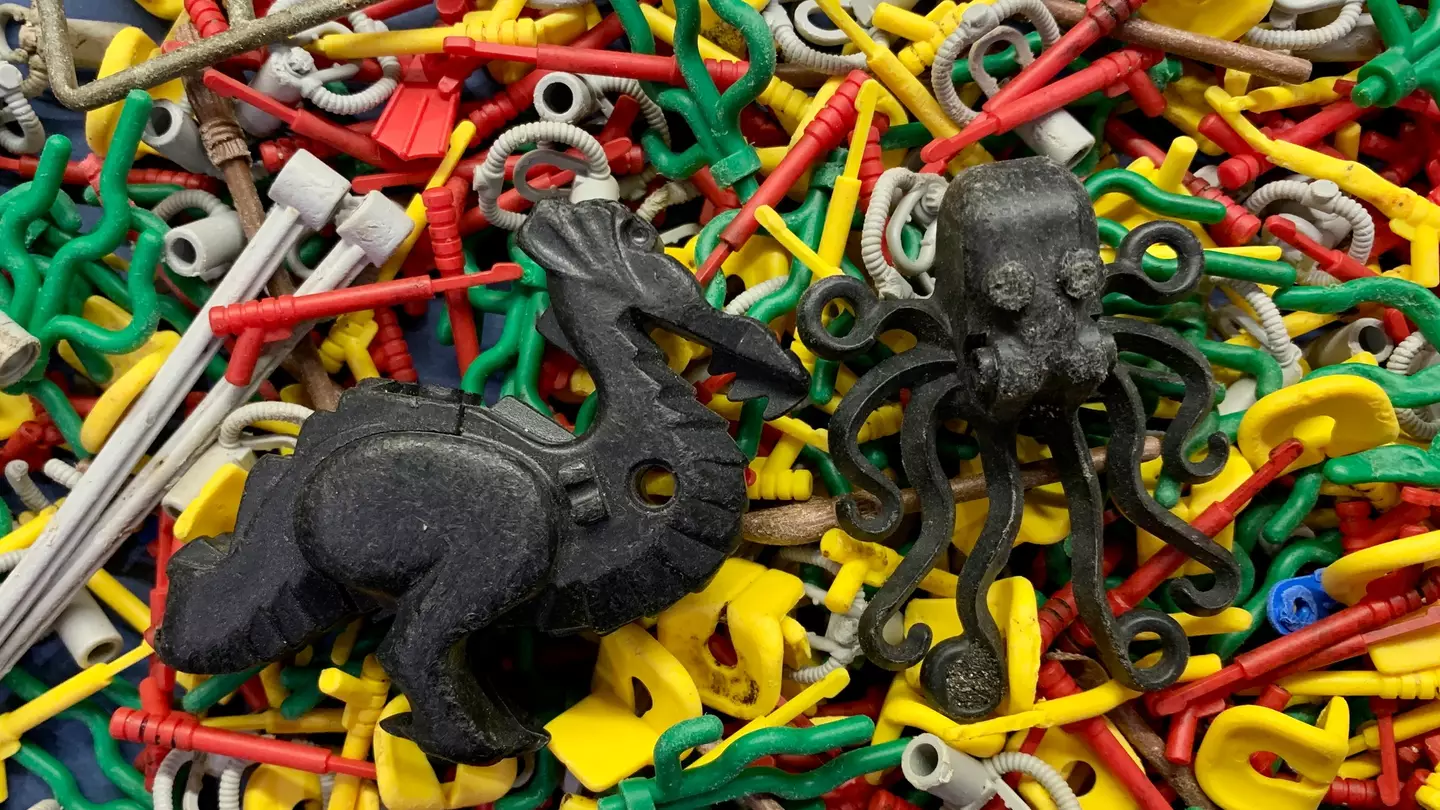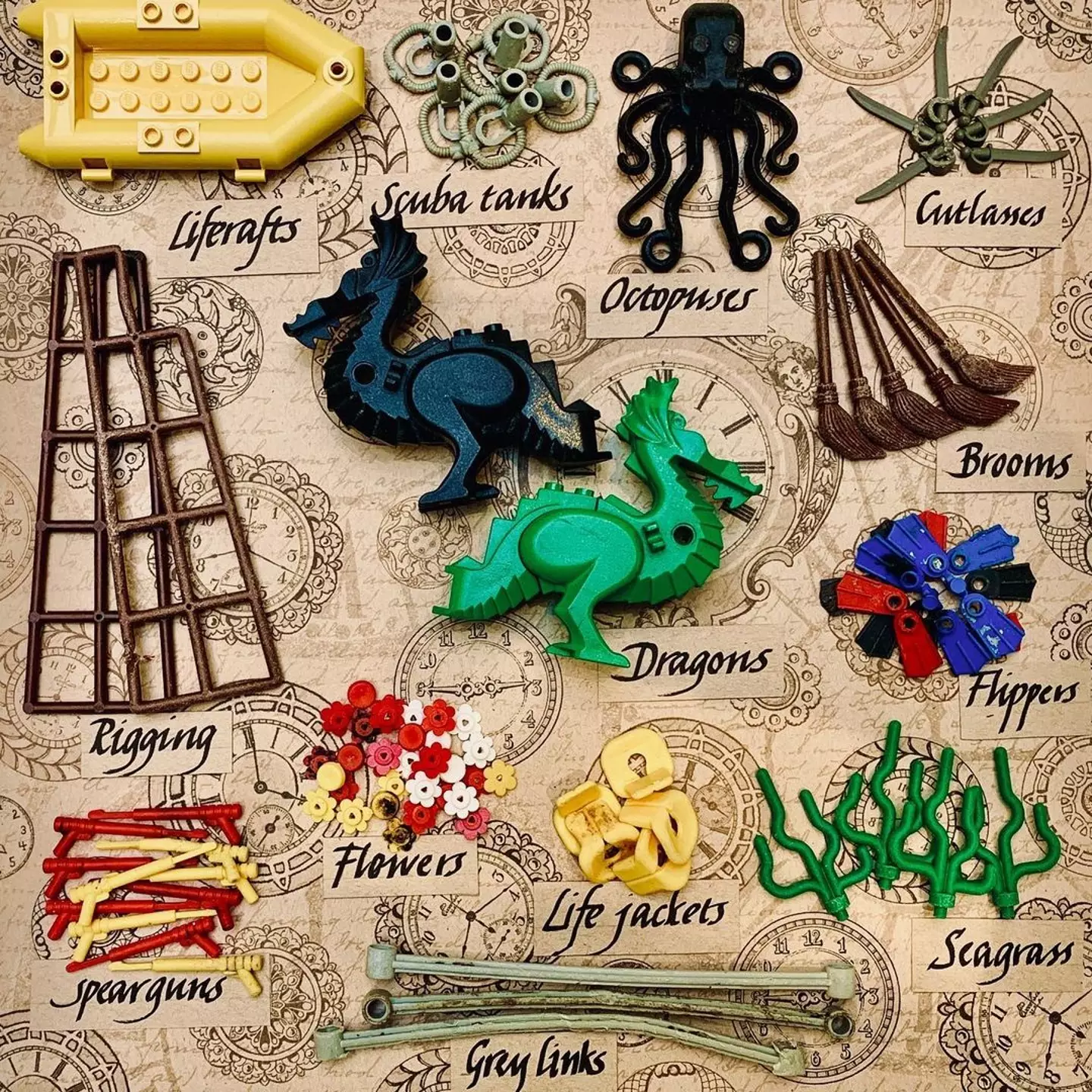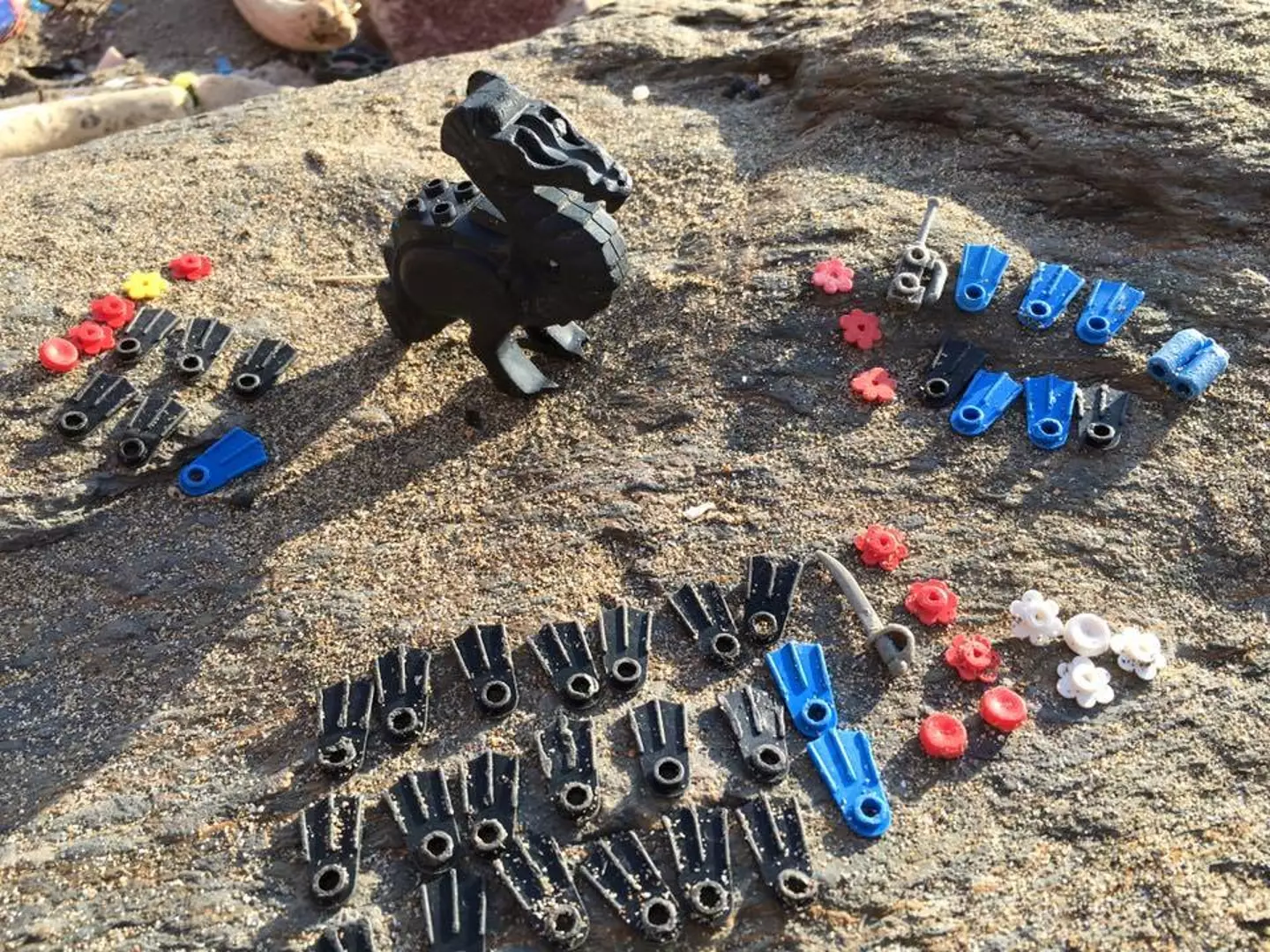
A woman who has spent 25 years trying to find five million pieces of Lego lost at sea has written a book about her project, having become known locally as the 'Lego Lady'.
The story begins on 13 February 1997, which was when the Tokio Express, a cargo ship that had set sail from Rotterdam, was hit by a rogue wave off the coast of Cornwall.
Among the 62 shipping containers on board – some transporting cigarette lighters, hose parts, wheelbarrow wheels, garden tools and furniture – was one carrying nearly five million pieces of Lego, which ended up spilling into the sea.
In the years since, beachcombers have found Lego pieces washing up not only on Cornish shores, but also as far as Ireland’s Atlantic coast.
Advert

Tracey Williams and her family enjoyed searching for the pieces on the shores near their home on the south coast of Devon, saying the strange treasure hunt became the ‘highlight of any trip to the beach’.
Williams ended up turning the search into a project, documenting the ‘Lego Lost At Sea’ that she found on social media – now also the subject of her new book, Adrift.
In her book, Williams explains how she became known as the ‘Lego Lady’, having been fascinated by the fact that much of the Lego was sea-themed, ‘by a strange quirk of fate’.
She writes: “After the BBC picked up on the story it went viral and beachcombers came forward in their hundreds to share their Lego finds, many posting images on social media.
Advert
“The Facebook page became a joyous affair, with people posting videos of the ‘happy dances’ they did when they discovered a bit of Lego.
“It grabbed attention around the world with people flying in from as far as the US to find pieces for themselves.
“To find out how far the Lego had drifted, a friend and I began recording where and when it washed up.
“It seemed much of it had been swept by ocean currents up the north coast of Cornwall, where it was discovered on almost every beach from Land’s End to Bude, with Perranporth proving to be a hotspot for Lego brooms.
“Sightings have since been made as far north as St. Bees in Cumbria and as far west as Spanish Point on Ireland’s Atlantic coast, where a dragon was spotted in early 2021.”
Advert

Her project became part of a wider study published last year, which found that Lego bricks could survive in the ocean for as many as 1,300 years.
Researchers at the University of Plymouth analysed the bricks that had washed up on the coastlines of south-west England, confirming the ages of the individual pieces and weighing them – before comparing the result with that of equivalent unused pieces.
Dr Andrew Turner, associate professor in environmental sciences, said: “Lego is one of the most popular children’s toys in history and part of its appeal has always been its durability.
“It is specifically designed to be played with and handled, so it may not be especially surprising that despite potentially being in the sea for decades, it isn’t significantly worn down.
Advert
“However, the full extent of its durability was even a surprise to us.
“The pieces we tested had smoothed and discoloured, with some of the structures having fractured and fragmented, suggesting that as well as pieces remaining intact, they might also break down into microplastics.
“It once again emphasises the importance of people disposing of used items properly to ensure they do not pose potential problems for the environment.”